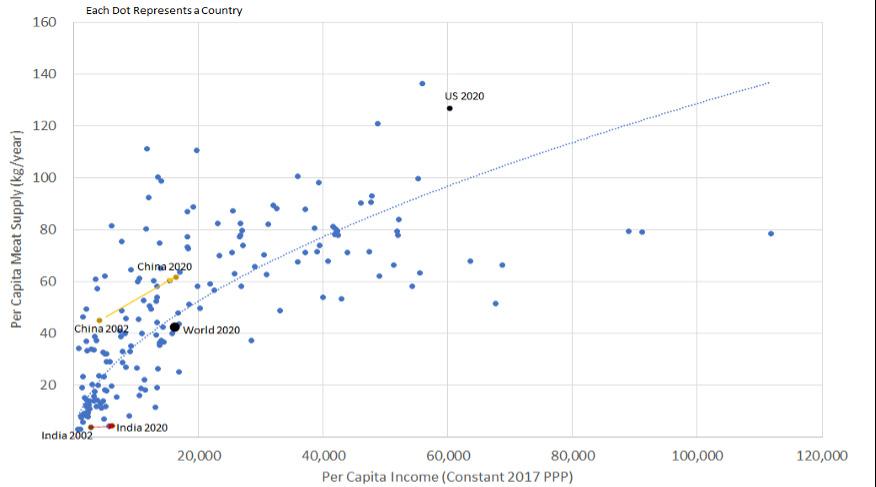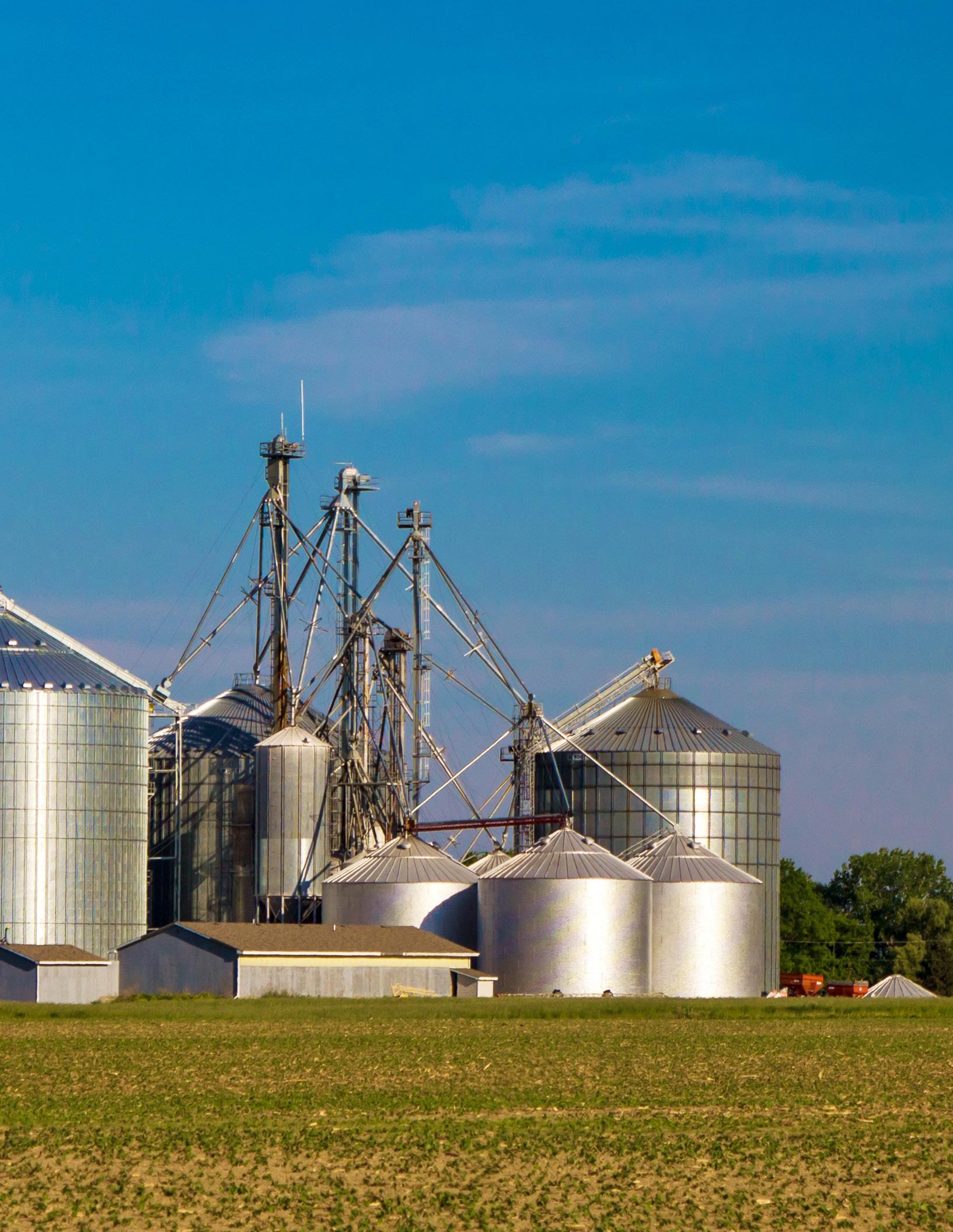
1 minute read
Global Relationship Between Incomes and Meat Consumption
Source: FAOSTAT Database while its meat consumption increased by 37%. This suggests U.S. protein producers should not expect a surge in export demand from India, even if trade barriers are reduced.
India also has economic and policy conditions that could limit trade opportunities with U.S. ag producers. Although overall economic activity is increasing, per capita incomes lag other developing countries like Brazil, Russia, China, and South Africa (fellow BRICS members), as well as regional groups like East Asia and the Pacific. The growing income inequality in India has resulted in more than 60% of the population living below the poverty line. The Economist ranked India 68th in the world in food security in 2022, roughly unchanged from their ranking in 2012. The relatively high level of agricultural import tariffs presents another barrier to U.S. markets, increasing the price of U.S. food and agricultural products relative to local producers.
Advertisement
While cultural and economic conditions make short-term inroads to India a challenge, there are many tailwinds for longer-term agricultural trade prospects. Agricultural production in India is already incredibly resource-intensive, making the next bushel of grain or gallon of milk that much harder to produce. India may have to look to foreign markets to keep the affordability of food products manageable for their growing population. Policies around self-sufficiency are unlikely to change overnight, but as India’s economy grows, so too can ag imports in relation to GDP. Trade tensions with India have thawed in recent months, and India has eliminated some of their retaliatory tariffs against U.S. produce (see related article on the “Two Sides of the Fruit and Vegetable Coin”). Further progress on reducing import barriers will no doubt remain a priority as the U.S. agricultural sector looks to diversify export markets.
It may be unrealistic to expect a shift in consumer preferences toward animal proteins in India, but U.S. producers can still grow and market the products that sell well in India. Vegetable oils, tree nuts, dairy products, and other higher-value consumer goods that do not involve animal proteins are all exported to India today, albeit in modest quantities relative to the size of the population.
If the U.S. can slightly modify its ag exporting playbook, India shows tremendous promise as a growth market for many agricultural products in the years to come.











